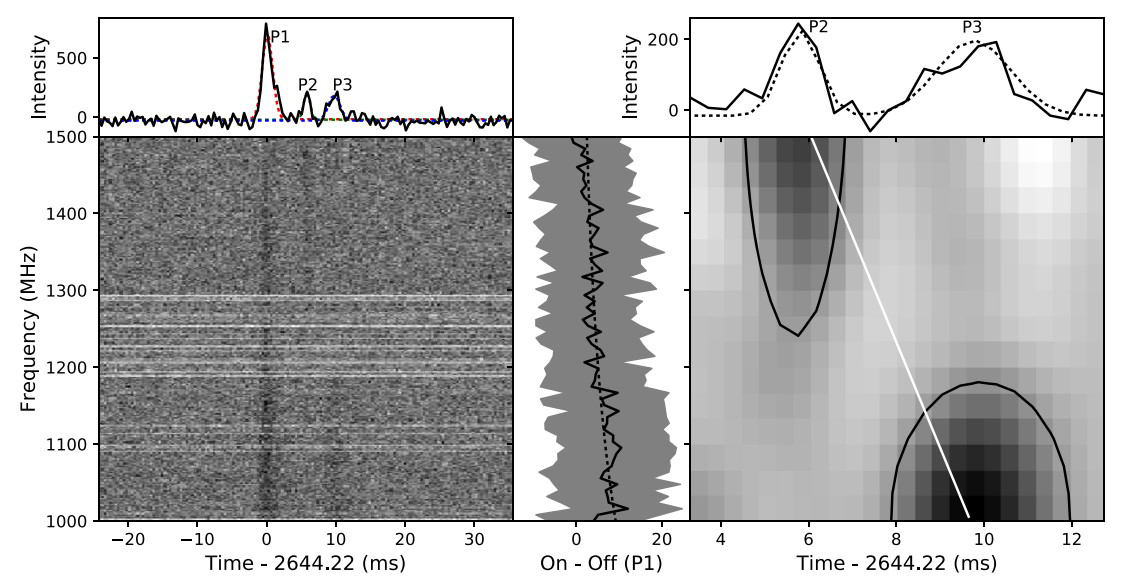A Fast Radio Burst Discovered in FAST Drift Scan Survey
A Fast Radio Burst Discovered in FAST Drift Scan Survey
Weiwei Zhu , Di Li , Rui Luo , Chenchen Miao , Bing Zhang , Laura Spitler , Duncan Lorimer , Michael Kramer , David Champion , Youling Yue , Andrew Cameron , Marilyn Cruces , Ran Duan , Yi Feng , Jun Han , George Hobbs , Chenhui Niu , Jiarui Niu , Zhichen Pan , Lei Qian , Dai Shi , Ningyu Tang , Pei Wang , Hongfeng Wang , Mao Yuan , Lei Zhang , Xinxin Zhang , Shuyun Cao , Li Feng , Hengqian Gan , Long Gao , Xuedong Gu , Minglei Guo , Qiaoli Hao , Lin Huang , Menglin Huang , Peng Jiang , Chengjin Jin , Hui Li , Qi Li , Qisheng Li , Hongfei Liu , Gaofeng Pan , Bo Peng , Hui Qian , Xiangwei Shi , Jinyuo Song , Liqiang Song , Caihong Sun , Jinghai Sun , Hong Wang , Qiming Wang , Yi Wang , Xiaoyao Xie , Jun Yan , Li Yang , Shimo Yang , Rui Yao , Dongjun Yu , Jinglong Yu , Chengmin Zhang , Haiyan Zhang , Shuxin Zhang , Xiaonian Zheng , Aiying Zhou , Boqin Zhu , Lichun Zhu , Ming Zhu , Wenbai Zhu , and Yan Zhu
Abstrat:
We report the discovery of a highly dispersed fast radio burst (FRB), FRB 181123, from an analysis of ∼1500 hr of drift scan survey data taken using the Five-hundred-meter Aperture Spherical radio Telescope (FAST). The pulse has three distinct emission components, which vary with frequency across our 1.0–1.5 GHz observing band. We measure the peak flux density to be >0.065 Jy and the corresponding fluence >0.2 Jy ms. Based on the observed dispersion measure of 1812 cm−3 pc, we infer a redshift of ∼1.9. From this, we estimate the peak luminosity and isotropic energy to be 2 × 1043 erg s−1 and 2 × 1040 erg, respectively. With only one FRB from the survey detected so far, our constraints on the event rate are limited. We derive a 95% confidence lower limit for the event rate of 900 FRBs per day for FRBs with fluences >0.025 Jy ms. We performed follow-up observations of the source with FAST for four hours and have not found a repeated burst. We discuss the implications of this discovery for our understanding of the physical mechanisms of FRBs.
